VLIW
This lesson covers VLIW and explicitly parallel processors. These processors do not try to identify ILP on their own, instead doing what the compiler instructs them to do.
The notes for this lesson can be found here
Superscalar vs VLIW
Below is an excerpt from the lectures describing the differences between out-of-order and in-order superscalar processors and very long instruction word (VLIW) processors.
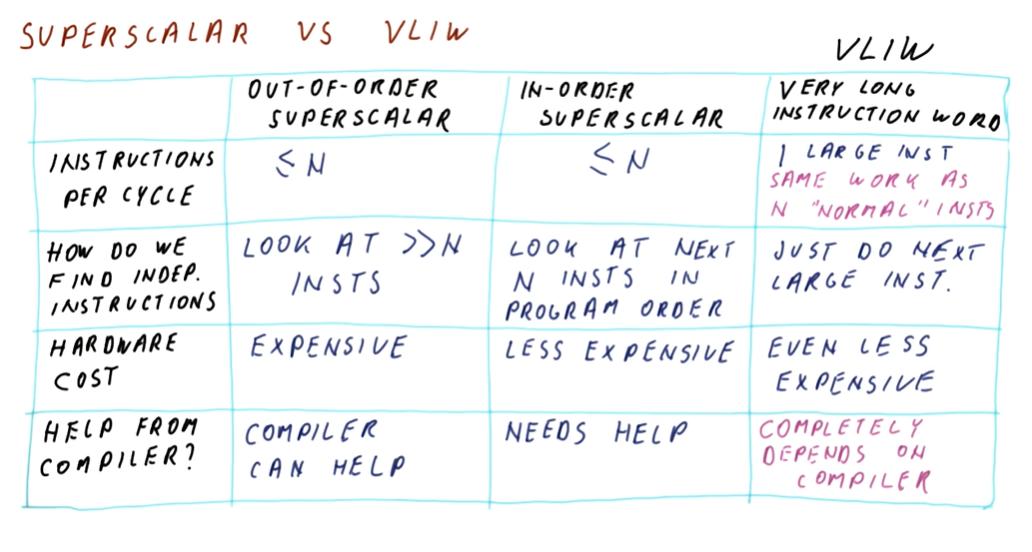
Superscalar vs VLIW quiz
Below is a quiz from lectures comparing the possible program size between a
out-of-order superscalar processor and a VLIW processor. If each 128-bit
instruction for a VLIW processor has no dependencies and can execute all four
operations at once, our programs can be equivalent. If we have dependent
instructions, however, there's a worst-case possibility our 128-bit instructions
would include NOPs for 3/4 operations. This would quadruple the program size.
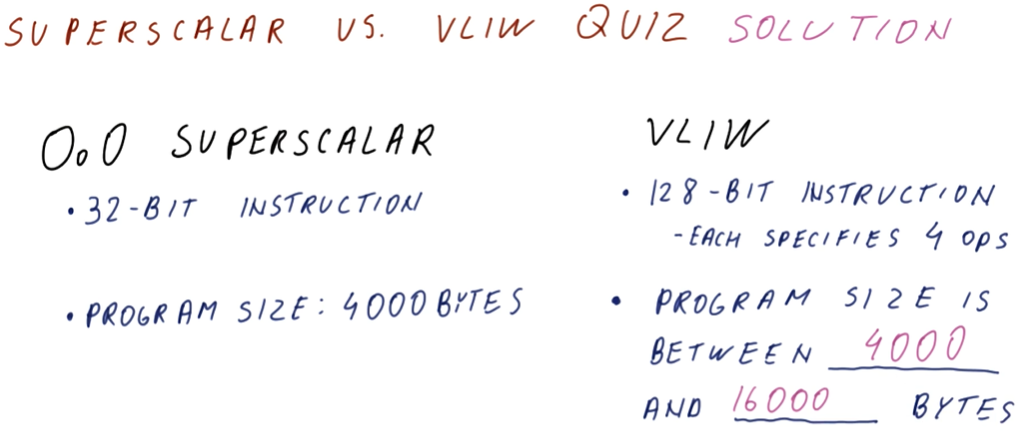
VLIW: the good and the bad
Below is an excerpt from the lectures providing a high-level description of the pros and cons of VLIW processors. A quick breakdown of what's not covered in the image below:
- Compiler does the hard work - plenty of time. The basic discussion around this is that the compiler has more time to schedule instructions, and the program will be run many times afterwards. This is in contrast to superscalar processors that must schedule instructions during runtime.
- Latencies not always the same - this is talking about how the compiler won't be able to predict how much latency will be present when the code executes on different hardware. Cache misses might take longer in different environments.
- Irregular applications - it's difficult for a compiler to schedule and predict the semantics of an irregular program. Things that leverage machine learning, etc. are in this group.
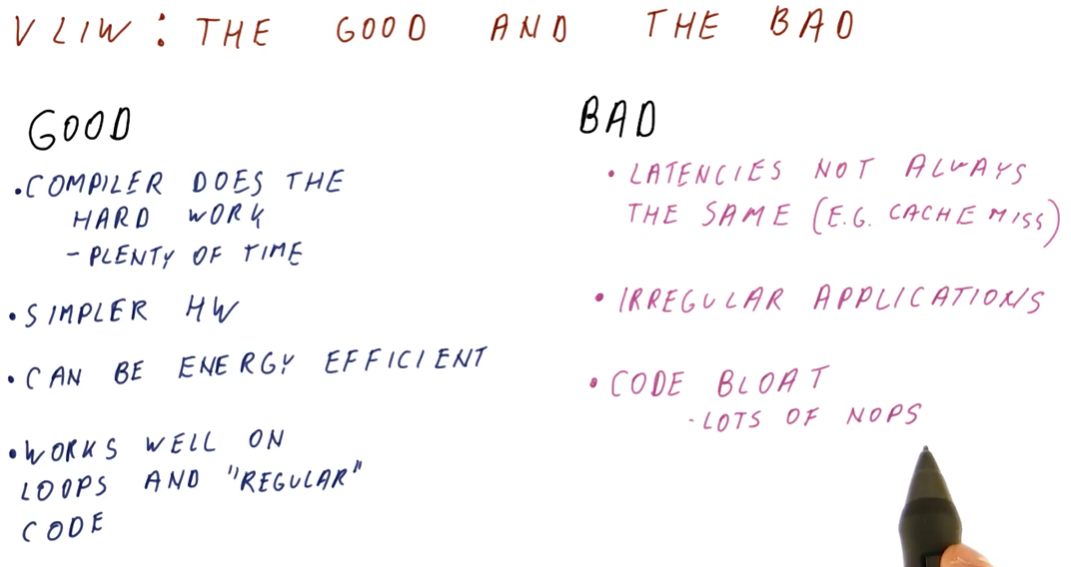
VLIW backwards compatibility quiz
Below is quiz about VLIW backwards compatibility. In this instance, the new compiler is not a VLIW processor. Why? With VLIW, the compiler guarantees that an instruction contains multiple independent operations. If we increase the number of instructions executed per cycle, we cannot guarantee that dependencies will not exist between the two instructions being executed - the compiler did not account for this and we're breaking the contract, anyways.
In order to run a program on this new VLIW processor, we need to re-compile the code so that the compiler can re-schedule the instructions and resolve dependencies.
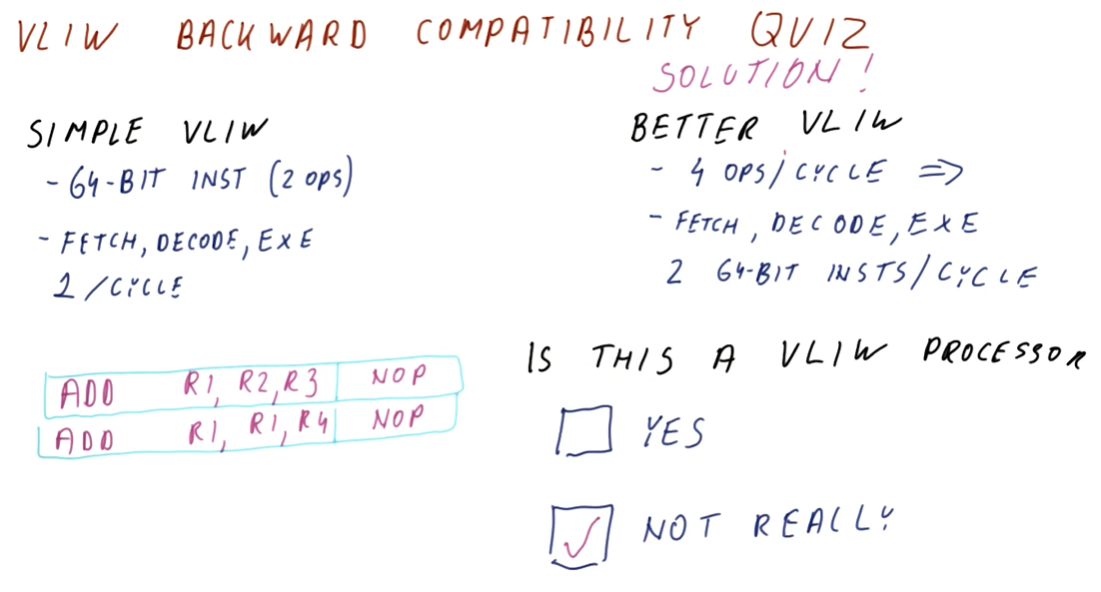
VLIW instructions
Below is an excerpt from the lecture, describing the the characteristics of VLIW instructions.
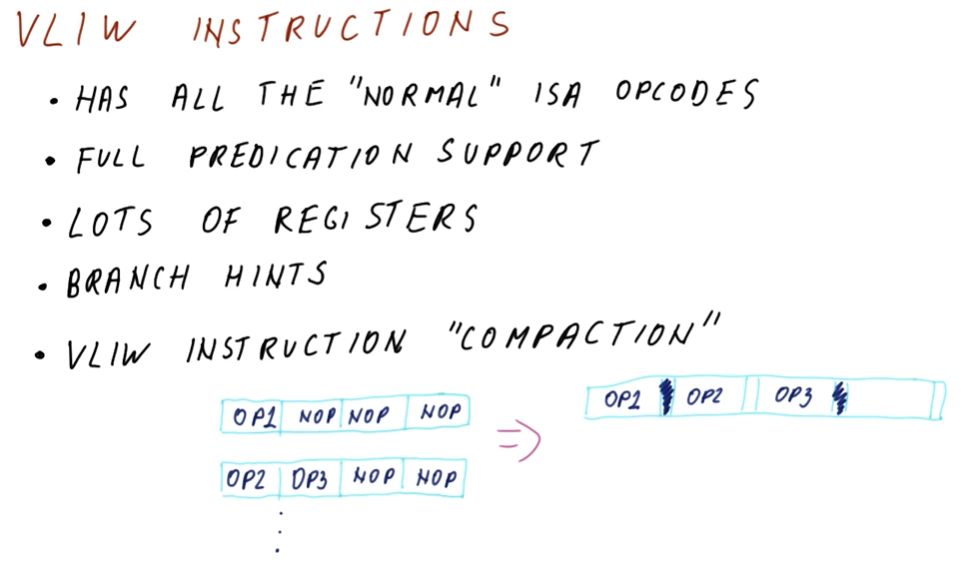
VLIW target market
Below is quiz from the lectures asking us to rank the best application for VLIW processors.
